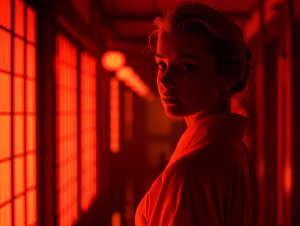 Light plays a vital role in human biology, influencing everything from sleep cycles to cellular repair. Bioactive light comes in five different forms. Each type has a unique influence on our physiology; triggering cellular and systemic responses throughout the body. These interactions spark a cascade of changes at the molecular level.
Light plays a vital role in human biology, influencing everything from sleep cycles to cellular repair. Bioactive light comes in five different forms. Each type has a unique influence on our physiology; triggering cellular and systemic responses throughout the body. These interactions spark a cascade of changes at the molecular level.
- Ultraviolet (UV) Light – UV light is primarily known for its role in vitamin D synthesis. UVB radiation from the sun triggers vitamin D production in the skin. It’s vital for bone health, immunity, and mood. However, excessive exposure to UV light can lead to skin damage and increase the risk of cancer.
- Blue Light – Blue light is a high-energy visible light that helps to regulate our circadian rhythms by stimulating receptors in the retina that signal the brain to be awake. While blue light exposure during the day can enhance alertness, excessive exposure at night (often from screens) can disrupt sleep patterns.
- Red Light – Red light is well known for its regenerative effects. Low-Level Laser Therapy (LLLT) uses specific wavelengths of red light to promote skin healing, reduce inflammation and improve circulation. It stimulates mitochondria, the energy centre of cells – this enhances tissue repair and recovery.
- Near-Infrared Light (NIR) – Near-infrared light penetrates deeper into tissues than red light and has a similar therapeutic effect. It promotes muscle recovery, pain relief, and wound healing. It does this by reducing inflammation and improving cell function through photobiomodulation.
- Far-Infrared Light (FIR) – Far-infrared light generates heat when it hits human tissues. This promotes detoxification and relaxation. FIR saunas are commonly used to improve circulation and reduce stress, as the heat helps dilate blood vessels and improve oxygenation in tissues.
How’s this useful?
Alright, here’s the deal. Low-Level Laser Therapy (LLLT) might sound like something out of a sci-fi movie, but the reality is even better. It’s this incredible, non-invasive treatment that uses light to trigger real biological changes in your body. We’re talking about fat loss, faster healing, reduced inflammation, and even pain relief. Now, if you’re thinking, “How can light do all that?”—I get it. But science is showing us that this stuff works.
When you apply LLLT, it’s like flipping a switch in your cells. It wakes up your mitochondria – think of them as the powerhouse of your cells – and suddenly, your body is able to heal faster, break down fat more efficiently, and perform at a higher level. And the best part? You’re not doing anything extreme. You’re just using light. Add in a little exercise, and the results are even better. It’s like compounding interest on your health!
So, why should you care? If you want a smart, safe, and effective way to get healthier, lose fat, and feel better without invasive treatments, check out LLLT.
P.S. Not all laser treatments are created equal. The effectiveness of laser therapy depends on the wavelength and power of the laser used. Different wavelengths target specific cells or tissues in the body, so the right combination of these factors is crucial for achieving the desired results. Make sure to consult with a professional to ensure you’re getting the right treatment for your needs.
